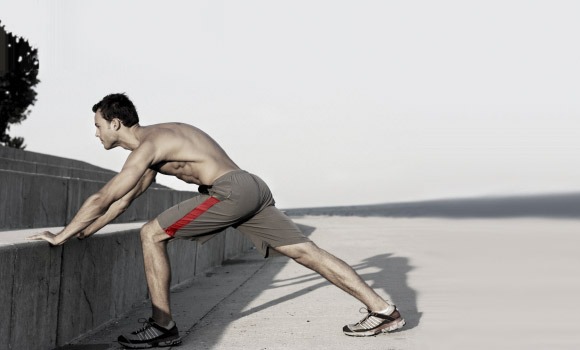The Types and Benefits to You and Your Workout
Jay Griffith, DPT
What is Stretching?
Stretching is a natural reaction which allows an individual to lengthen muscle fibers. From the time we are born we stretch. Stretching provides increased blood flow to muscles and also helps improve range of motion of our joints. In today’s busy and active lifestyles it is not uncommon to see someone stretching before activity. Studies have also shown that stretching may help decreased injury in active populations. People of all ages stretch but are we stretching correctly? The following article will touch on the different types of stretching, how to safely perform stretches and some current literature about the benefits of stretching on the human body.
Types of stretching
In general there are four types of stretching: static, dynamic, proprioceptive neuromuscular facilitation, and ballistic.
Static stretching
Static stretching includes the slow gradual pull which provides lengthening of a muscle unit. This is the most common type of stretching. An example of this would be bending over to touch your toes and holding that position for a designated length of time. However how long are you supposed to hold this stretch: 15, 30 60 sec? We will touch on that subject later.
Dynamic Stretching
Dynamic stretching is the use of specific movements to target muscle groups while providing increased blood flow to the muscle fibers. These activities include light jogging, lunges, squats, but kickers, grape vine, Jumping jacks. This type of stretching is commonly used among individuals who are participating in some type of sport or physically demanding exercise such as CrossFit.
Proprioceptive Neuromusclular Facilitation
Proprioceptive neuromusclular facilitation or PNF is a stretching technique that is mostly used in a rehabilitation setting. It includes an activation of an opposing muscle to put the target muscle on stretch. There are many different type of PNF stretching used for specific conditions. A common example is the contract relaxe method used to improve knee flexibility following a total knee replacement. The practitioner will have the patient kick out into knee extension for a brief amount of time and then relax while the practitioner provides a manual stretch into knee flexion.
Ballistic Stretching
The next form of stretching is ballistic stretching. Ballistic stretching is bouncing or providing quick and brief movements into an increased range of motion. An example would be bending down to touch your toes repeatedly and quickly. This method is strongly discouraged by the medical community as it may cause more harm than good.
Stretching guidelines
In general you should always consult your medical provider before performing any type of stretching or exercise regimen. Most medical professionals would agree that daily stretching should be a part of an individual’s routine. The USDA provides a good set of general guidelines for stretching. They recommend slowly and gradually stretching the target muscle until you feel a slight pull. This sensation should feel good and not be painful. Once you reach that point hold they recommend holding the stretch for about 10-20 seconds. Repeat this procedure 2-3 times per muscle group. The above example is a good guideline for static stretching. Now what about dynamic stretching? As mentioned before, dynamic stretching is mostly used in an athletic setting. The activity performed should dictate the movements used to stretch. An example of a dynamic warm up for a basketball player would include light jogging, high knees, lunges, skipping with high knees, butt kickers, lateral shuffle. The goal is to get the blood pumping and to the muscles in preparation for activity.

Studies on stretching
If you perform an internet search of stretching you will most likely be overwhelmed with information on the topic. There are many studies out there that dispute how to and how long and individual needs to stretch and for specific body parts. Most articles agree that stretching should be a daily activity to improve bodily function. When researching this article the range of time to hold a stretch was a common topic of controversy. Some said 15 seconds and others suggested holding for over a minute. Which is the best to provide optimal stretch? The following is a study that was conducted by Jay Griffith, PT and his colleagues while in Physical Therapy school.
The study looked at how long a static stretch lasts in the hamstrings of college aged adults. Also the study examined what happed when a static stretch was added to a dynamic warm up. What they found was both interesting and informative. It should be taken into consideration this study was done on a small sample size of college age adults and the results cannot and are not the norm for the general population.
The results showed that when a static stretch of at least 15 sec was added to a dynamic warm up, the length of time the hamstrings had increased range of motion was greater than that of a static stretch alone. This leads us to believe that when performing a stretching routine, adding the static and dynamic stretch together may provide increased ROM for a longer amount of time.
The take home message from this article is stretching is a natural and beneficial activity for the human body. It should be encouraged to incorporate some type of stretching into your daily routine. The type and duration of your stretch should be based on the activity you want to perform. So stretch it out and feel good.







